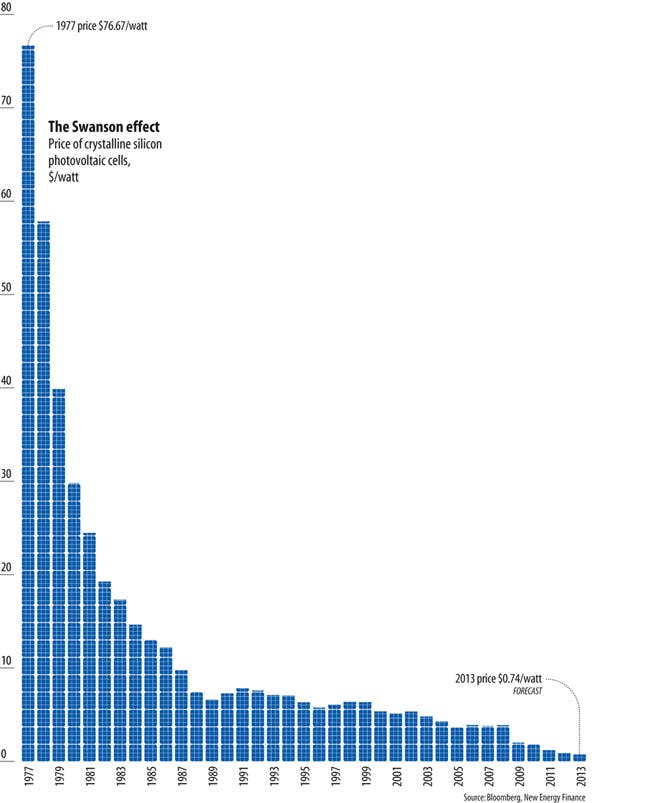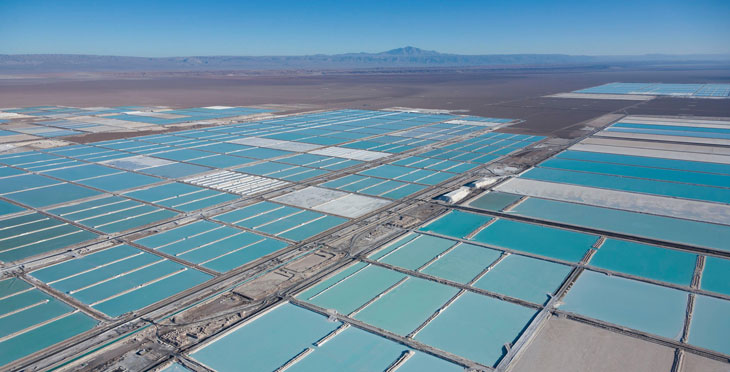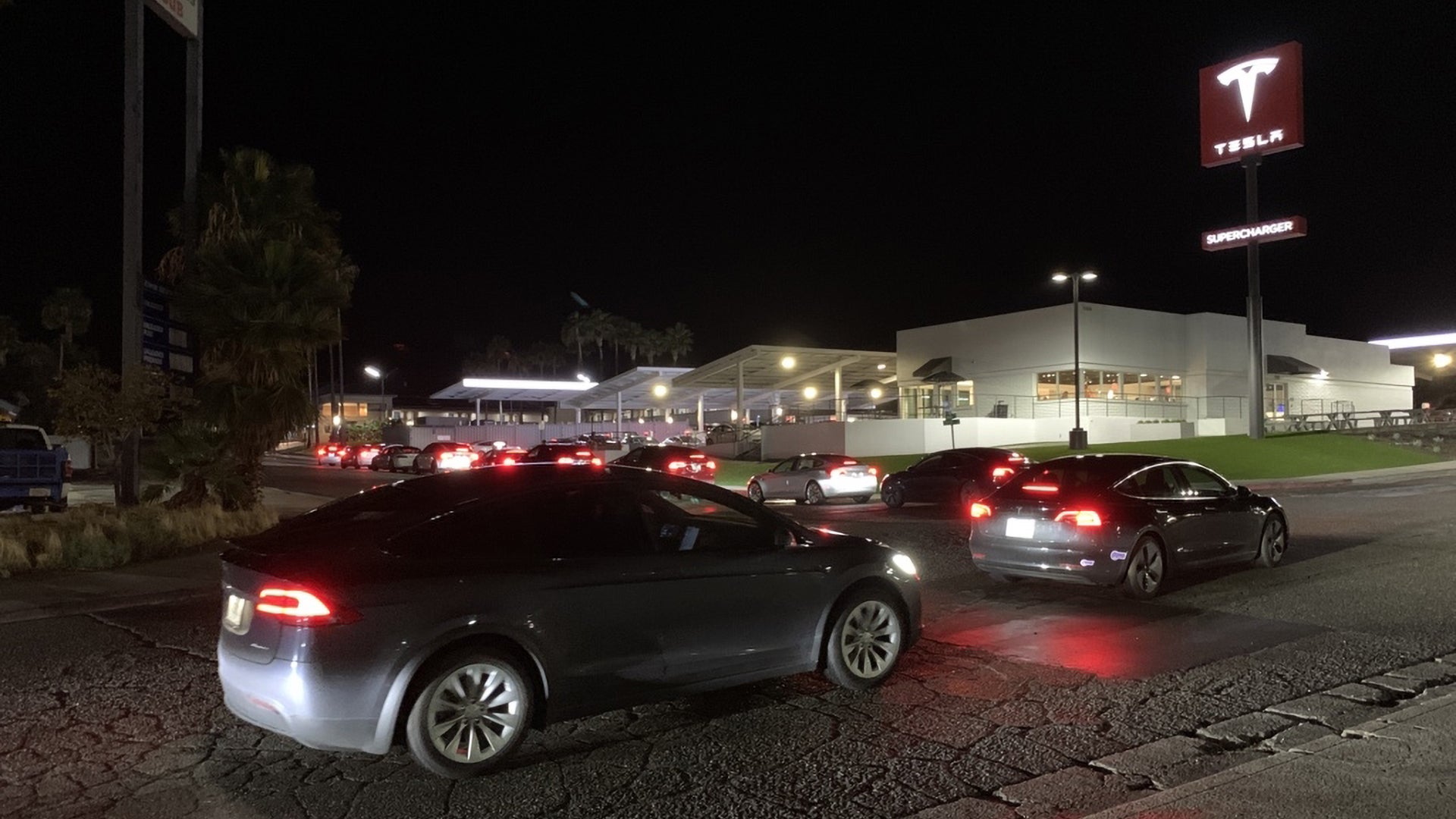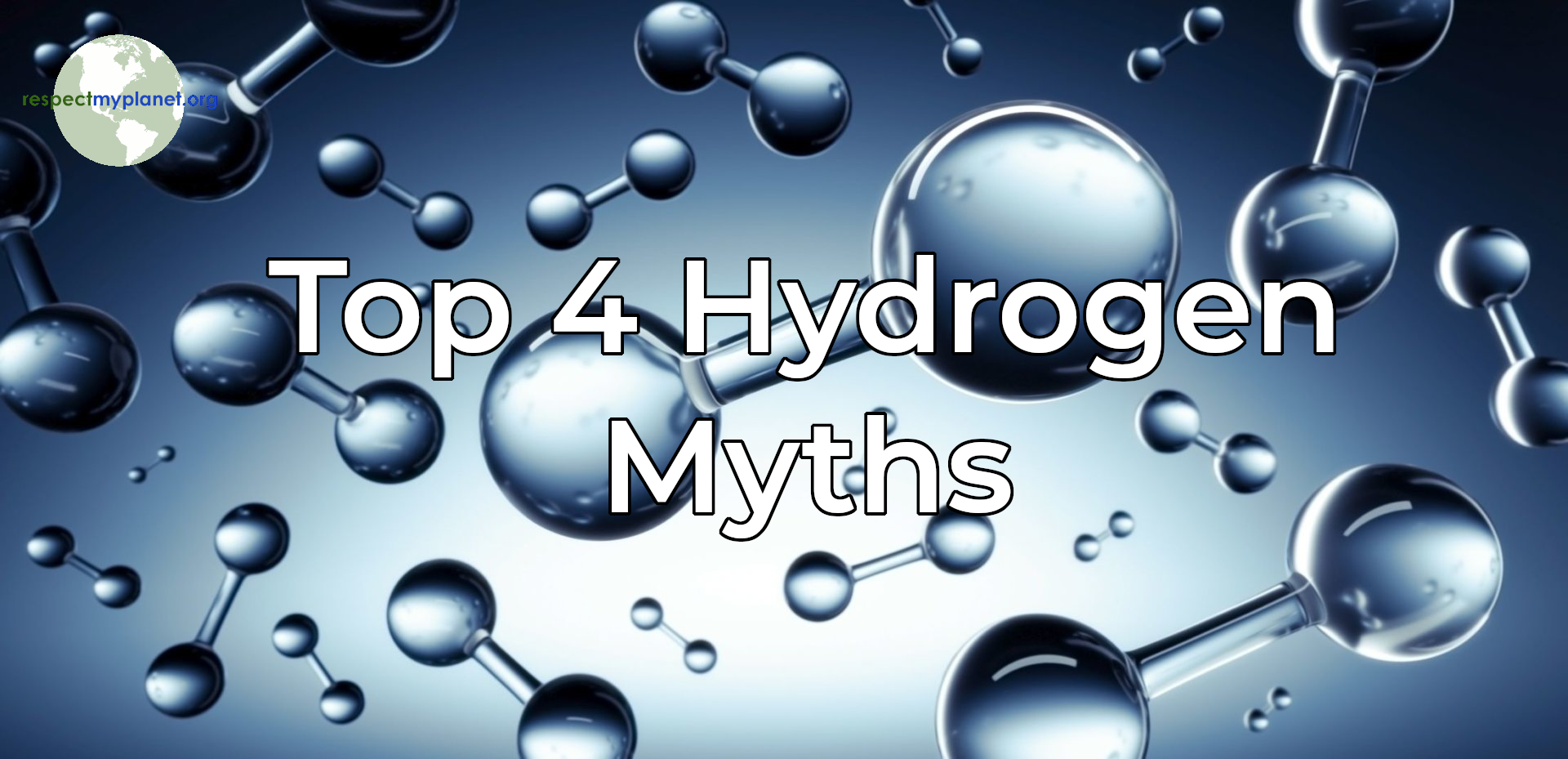Battery technology has come a long way and has helped us in many ways. Hydrogen technology has also come a long way and shows promise to reduce carbon intensity in energy sectors that batteries cannot reach. Green hydrogen can reduce CO2 emissions in the manufacture of ammonia, steel, and concrete as well as many other products. Hydrogen acceptance and enthusiasm could be much further along than it is today, but it has been held back by zealous BEV supporters. Instead of supporting hydrogen as a complimenting technology to batteries, many zealous BEV radicals are compelled to attack and slander hydrogen with misleading and false information. In this post, we will look at the Top 4 Hydrogen Myths that continue to circulate through news articles misleading readers.
In June of 2014, Elon Musk called fuel cells “fool cells” at a Tesla shareholder meeting attended by Wall Street investment analysts. Instead of recognizing hydrogen as a complimentary technology to other zero emission technologies, Elon viewed hydrogen as a threat and set out to smear it. By 2016, Elon had perfected his anti-hydrogen monologue like a comedian honing a joke. In the short video clip below, Elon mentions the #1 hydrogen myth he & his influencers have been falsely propping up for over six years now.
Just like Trump has enthusiastic supporters that echo his viewpoints, so too does Elon Musk. It’s these most ardent Tesla supporters who perpetuate misleading attacks against hydrogen energy 99% of the time. And, it’s not just individual Tesla shills that rile up crowds of people against hydrogen with misleading information, it’s popular Tesla shill websites posing as news publications like Electrek, CleanTechnica, and Teslarati that slander hydrogen energy under the guise of fact based reporting. Even publications like InsideEVs & Green Car Reports publish the same misleading tripe attacking hydrogen.
Anti-hydrogen propaganda has become so wide spread that many main stream news sites have been echoing these hydrogen myths for years now. The Top 4 Hydrogen myths are easy to identify because you find the same ones again and again when you’re reading about hydrogen.
Let’s take a look at the top 4 myths anti-hydrogen battery zealots use to slander hydrogen fuel cell technology so you can spot them and push back. Each of these 4 common tropes are ironically worse for BEVs than they are for hydrogen fuel cell powered cars and trucks. It’s time to turn the tables on bad science from BEV radicals that does not help us fight climate change. It’s time to fight misleading information with basic science and common sense. RMP will help arm you with some basic questions grounded in science that will allow you to push back on these 4 myths when you encounter them.
Top Hydrogen Myth #4 – Over 90% of hydrogen production comes from fossil fuels
The hydrogen market for zero emission fuel cells is brand new. For almost 100 years hydrogen has primarily been made to refine oil into gasoline and to make ammonia to fertilize our food. The legacy hydrogen market has absolutely nothing to do with hydrogen’s future. There are about 10,000 FCEVs on California roads and they’ve mostly been registered in just the past 5 years. No one has ever tried to make green hydrogen for emerging markets for zero emission fuel cells until now. By law in California, there is a minimum requirement that at least 33% of any dispensed hydrogen comes from renewable sources. Even then, there are multiple stations that surpass that minimum requirement and dispense 100% renewable hydrogen. This dispensed H2 for FCEV drivers in California puts zero pressure on the grid.
By contrast, we still don’t have a single example of off-grid renewable fast charging. Elon Musk promised over 5 years ago that all Tesla Superchargers would be powered by off-grid renewable wind & solar. Five years later, there is not a single example of this; not a single one. We don’t know the cost of renewable fast charging, we don’t know its footprint, we don’t even know if renewable powered fast charging is feasible. While no 100% renewable off-grid fast chargers powered by wind or solar exist today, there are several 100% renewable wind, solar, and biomethane hydrogen refueling stations and we know exactly how much they cost. As more of these hydrogen refueling stations get built and demand for green hydrogen grows, experts predict the cost of green hydrogen and the stations that dispense it will fall just like photovoltaic solar panel prices have fallen since 1977.

In this first quarter of 2022, Air Liquide will begin making shipments of renewable hydrogen from their newly constructed Las Vegas liquefaction plant. This plant will supply up to 30 tons of LH2 to nearly a dozen second generation hydrogen stations in California each day. 30 tons of hydrogen per day is about enough for 40,000 vehicles. This means there is a near term possibility approximately 90%+ of hydrogen dispensed in California could come from renewable resources in the next year or so.
It’s the exact opposite of what anti-hydrogen detractors say. The truth is that the majority of electricity consumed to charge EVs comes from fossil fuels but the same knock is never used to when talking about BEVs. The next time you read the hydrogen myth that over 90% of hydrogen comes from fossil fuels, fight back. Ask the person saying or writing about this myth to show you how a state like West Virginia that gets over 90% of its electricity from burning coal can implement renewable EV fast charging. Tell them that over 90% of hydrogen used for refueling FCEVs in California will soon come from a renewable source in Las Vegas. Ask them to show you an off-grid EV charger system that provides 50MWh of energy per day from 100% renewable sources like Air Liquide’s green hydrogen plant in Las Vegas. Tell them that legacy hydrogen production over the past 100 years has nothing to do with plans for new green hydrogen infrastructure.
Top Hydrogen Myth #3 – Hydrogen is the most abundant element in the world, but it does not exist naturally
RMP has been debunking hydrogen myths on this website since 2015. The most common technique used to slander hydrogen is to single it out for characteristics that challenge all energy mediums. Saying hydrogen production has practicality issues is a classic example of anti-hydrogen disinformation. Most people reading this right now have all the materials within 100 feet of them to make hydrogen: a 9V battery, some table salt, a paper clip, and a glass of water. Making hydrogen is so simple. It’s the epitome of easy, accessible, and abundant where ever you may live in the world. Now let’s compare H2 to some other energy carriers like lithium ion batteries, gasoline, and coal.
Battery grade lithium does not exist naturally either. The lithium used to make batteries requires open pit mining techniques that produce toxic waste & divert millions of gallons of precious drinking water away from people who need it. The process to make battery grade lithium is complicated, expensive and only can be done in very specific geographies. First you have to find where the precious materials exist to make battery-grade lithium. Then you have open pit mining operations to extract the raw materials from their natural habitat in ways far more difficult than it is to liberate hydrogen from the drinking water in your kitchen right now.
Battery producers and suppliers could be facing a major cost headache starting this year as prices for battery-grade lithium are poised to skyrocket. Prices for the metal are already trading at a record high of $35 per kilogram in Asia, and are likely to keep climbing to $50 per kilogram in the second half of 2022 and trade at around $52.5 per kilogram in January 2023.1

Lithium hydroxide comes primarily from Australia, the “Lithium Salts Triangle” in South America, and from the Quinhai province in China. It takes about 10 tons of lithium brine to make 15kg of battery grade lithium. Finding and obtaining lithium is done in similar ways to finding and obtaining crude oil and keeps us bound to similar oil extraction environmental impacts. Scott Hynek, a USGS geologist based in Salt Lake City says of lithium production, “we’re taking a more petroleum-like perspective”. Scientists are tracking not just where deposits are, but how they might move: where the water flows, where the lithium-rich fluid could become trapped beneath a layer of hard, impermeable rock.2
The point is, lithium does not exist naturally. It’s much more difficult to find and extract lithium than any other energy carrier making material; even crude oil. Cobalt is also difficult to obtain and involves child labor in the Congo where 60% of the world’s cobalt comes from. It can take 30 tons of cobalt ore to produce 30kg of cobalt. Once you have all of the ingredients to make a lithium-ion battery, you still have to put it all together. And even then, once the battery is manufactured, it’s only a storage medium at that point, you still have to go find the energy to charge it. Most of the electricity used to charge EVs in America comes from coal & natural gas which is ironically & erroneously why anti-hydrogen folks say hydrogen can’t work.
While it’s easier & less expenisive to obtain coal than lithium, it must still be mined, pulverized, transported, and burned in a process that we all know has terrible impacts on our air quality and water quality. After burning the coal, toxic ashes must be disposed. Crude oil is also easier to obtain than lithium, but still requires 3D seismic equipment to peek into the earth’s crust just to find it. Then wells must be drilled in hopes the well will produce because many don’t and get labeled dry holes. Even if you get the oil to the surface, it must be separated from brine, then refined, then transported.
Even as bad as oil & coal are to obtain, lithium ion batteries require more money, more access to remote regions of the world, and have the worst energy density of any other energy carrier.

Compared to hydrogen, every single other energy carrier is more difficult and expensive to obtain/produce. This is why hydrogen is orders of magnitude easier & cheaper to produce than any other energy medium at scale. This is another reason hydrogen costs will continue to fall like photovoltaic cells made from the second most abundant element on earth: silicon. The next time you’re reading a hydrogen hit piece about hydrogen not existing naturally, you can be rest assured the person writing that sentence is most likely echoing the myth they have heard so many times that they accept it as true. Challenge them by asking them the basic questions you read about here. Ask them if lithium exists naturally. Ask them where lithium comes from. Make these comparisons and points for the sake of argument. Listen closely to their answers. The truth might not make a lot of noise, but it defeats bullshit each and every time it gets into a fight.
Top Hydrogen Myth #2 – Hydrogen refueling stations cost over a million dollars, it would be too expensive to build the refueling infrastructure
Electric vehicles currently only make up a small fraction of all vehicles in service at about 4% or less. The fast chargers used to charge electric vehicles depend on a majority fossil fuel grid and there are no examples of off-grid renewable fast charging from wind or solar. We don’t know what a renewable wind or solar fast charger looks like or even costs, because they don’t exist.
Furthermore, there are thousands of miles of transmission lines to get the electricity from a coal or natural gas plant to the end consumer charging their EV. As we see more severe weather impacting power outages across the nation and world, how do we imagine we would charge our vehicles when the power is out regionally?
A single second generation liquid hydrogen refueling station in California with a 1,600 kg capacity and four refueling positions can supply over 50,000kWh of 100% renewable off-grid energy in a single day. That same station(s) can be refueled whenever necessary so it can continuously refuel vehicles 24/7 just like a gasoline station. Each driver refueling, can go from zero range to full range in under five minutes and be on their way. Those FCEVs can also produce enough energy to keep houses running their refrigerators and air conditioners with zero emissions energy in an emergency situation. FCEVs can make their own grid whereas BEVs depend on the grid. Hydrogen provides a resiliency after a major storm that you can’t put a price on when energy could be the difference between life & death.
At scale, the cost of hydrogen refueling infrastructure is not only much more capital efficient than BEV charging, it’s much more practical. At less than 4% of vehicles on the road, we are already seeing major lines at charging stations with massive 40 stall footprints. These charging stations take up more space and recharge much slower than hydrogen refuels. The footprint of a second generation off-grid hydrogen refueling station is one order of magnitude smaller than the on-grid Kettleman City Supercharger shown below. The much smaller hydrogen station can also dispense more energy much faster than a SuperCharger. A hydrogen dispenser can dispense about 150kWh of 100% renewable energy in five minutes whereas a so-called fast charger takes hours to deliver half of that. As they say, time is money.

Don’t let this myth about BEV charging being less costly than hydrogen infrastructure go unchallenged. When you hear it or read it, speak up. Ask when we will see an off-grid solar or wind charger? Ask what the footprint will be of an off-grid renewable charger and how much it will cost? Ask how it would work when there are regional power outages and our ambulances & fire trucks need energy to save lives. Hydrogen fuel cells can be the compliment to BEV charging that allows for off-grid charging. RMP supports battery technology and building hydrogen infrastructure for off-grid battery stations to make them more economical. If someone supports BEVs they should certainly support hydrogen as a means to charge their car with off-grid renewable energy from sun & wind. Hydrogen is the most economical way to build out our carbon free energy infrastructure for the future and that includes charging batteries from clean hydrogen. Hydrogen and batteries compliment each other.
Top Hydrogen Myth #1 – Recharging a battery is a more efficient use of renewable electricity than making hydrogen
RMP wrote this detailed post in 2017 debunking one of the longest and last standing pillars of the anti-hydrogen crowd. The premise and firmly held belief of anti-hydrogen faithful is that hydrogen can’t work because it’s inefficient, this is immediately followed with “why not just put the energy into a battery”?
The effect of this misleading & and erroneous concept of hydrogen being inefficient has been the biggest myth of all the set backs in developing a carbon neutral hydrogen economy. Not only is the “hydrogen is inefficient” argument wrong, the sad irony is how inefficient we have become in allocating finite and precious battery making resources like lithium, cobalt, manganese, and nickel. Batteries are a great technology, but they do their best work when they team up with other technologies. The best way to use batteries is to make sure we’re right-sizing the battery pack so we can make sure there is enough to go around for everyone.
It makes no sense to make 100kWh battery packs with precious & finite materials when that same amount of material could have made twenty 5kWh battery packs for twenty fuel cell electric vehicles that use renewable hydrogen for fuel. It is completely inefficient to allocate batteries to vehicles such that one car has a 100kWh pack when 95% of average driving trips could be covered with a 10 to 15kWh battery. Talk about inefficient!
There is another irony too when it comes to people using Dr. Bossel’s debunked thesis about hydrogen being inefficient. Dr. Bossel basically said that using electricity to make hydrogen is inefficient as compared to charging a battery. Why then are gigawatts of renewable energy going wasted each year in California alone? It’s because the grid can’t accept the over production renewable electricity and it therefore goes to waste because grid operators are forced to dump it or “curtail” it. That same wasted energy could make tons of green hydrogen for 10s of thousands of California FCEV drivers.
The California Independent System Operator (hereafter CAISO) maintains reliability on one of the largest and most modern power grids in the world. The organization works around the clock to meet the electricity needs of consumers, while increasing the amount of renewable energy used on the gird.
What was obvious to CAISO in 2017 was the same thing that was obvious to RMP; it was the thesis of RMP’s post debunking Dr. Bossel’s ridiculous concept of hydrogen inefficiency that Elon Musk supports: renewable energy created when the grid does not need it is wasted energy. The concept is called “curtailment”. Curtailment is the deliberate reduction in output below what could have been produced in order to balance energy supply and demand or due to transmission constraints. Curtailment is a loss of potentially useful energy because it could not be used. In simple terms, renewable energy is being wasted on a massive scale.
RMP predicted in 2017 that as more and more solar & wind generation capacity came online in California that CAISO would eventually have to curtail 100,000 MWh in a single month. Five years later, CAISO is smashing year over year records every single month in solar & wind curtailment. In March of 2021 (graph below) CAISO curtailed 342,000 MWh of energy in a single month! As you can also see below, CAISO has curtailed over 100,000 MWh in 14 different months over the past three years exactly as RMP predicted five years ago. Dr. Bossel’s “hydrogen inefficiency” thesis echoed for so many years now was not only wrong back in 2015 or so when it became popular with anti-hydrogen zealots, there is demonstrable proof every month that RMP was correct: more energy is being wasted than ever before. Batteries cannot scale to meet the storage challenges created by all this wasted energy. Hydrogen is the cheapest & most energy dense storage medium for all these wasted megawatt hours. The evidence is clear.

There is no reason to beat a dead horse on this myth. It’s so obviously debunked now just as it was in 2017. Electrek, Cleantechnica, Teslarati, InsideEVs, Green Car Reports, and so many others still broadcast the message that hydrogen doesn’t make sense because it’s inefficient. The next time you hear it or read it, speak up. Let that person know that the “hydrogen is inefficient” argument is just propaganda to fool Wall Street investors into pumping up the Tesla stock price. Let that person echoing the nonsense of hydrogen’s inefficiency know that each month California is breaking a year over year monthly record of energy wasted because it could not be used. Let them know that a 15kWh battery pack is enough to cover 95% of an average driver’s daily commute and that it’s horribly inefficient to make battery packs so big with such precious resources. Let them know the same amount of battery making material could have made battery packs for 20 fuel cell cars and the same amount of material could have done 20x the amount of good for our environment.
Final Conclusion – What can we do right now to reduce gasoline & diesel consumption as we ramp up green hydrogen infrastructure?
Write your senators and congressional representatives to let them know you support green hydrogen in your local community. Let them know that we can create good paying domestic jobs right here in America that provide the energy we need while reducing imports of lithium, cobalt, and foreign oil. If hydrogen refueling is not available in your area, buy a plug-in electric hybrid vehicle until it is. Plug-in hybrid electric vehicles use the same logic as a fuel cell vehicle in that they use a small battery pack (e.g. 10 to 15kWh) that will cover almost all of an average driver’s daily commute with no sacrifice on range. Companies like Toyota & Hyundai and many others will eventually swap those ICE range extenders with hydrogen fuel cells for 100% zero emissions driving like drivers in California are using right now.
The United States Department of Transportation Federal Highway Administration said that the average person drove 14,263 miles per year in 2019. That’s roughly 1,200 miles per month per driver or about 39 miles per day3. A Toyota RAV4 prime plug-in hybrid SUV has an 18.1 kWh battery pack that allows the vehicle to travel 42 miles in battery only mode which is more than 100% of an average driver’s daily commute. On those days that a driver needs to go more than 42 miles, it’s no problem because the RAV4 Prime has a range of 600 miles total. You could estimate that gasoline consumption would be reduced by over 95% for an average driver switching to PHEV without giving up any range, four wheel drive, or the versatility of an SUV that Americans demand for their active lifestyles. PHEVs are a similar concept to fuel cell cars. Companies like Toyota & Hyundai, who are focusing their efforts on hydrogen fuel cells, can make PHEVs with a better CO2 profile than long range BEVs and eventually replace the ICE portion of the PHEV with fuel cell technology.
If you contrast the RAV4 Prime PHEV with an 18.1kWh battery pack to smaller Tesla Model 3 with an 82kWh battery pack, you see a striking inefficiency: more than 4.5 times the amount of battery materials are used in a vehicle than are required to cover 95% of daily driving. What a waste! Instead of making 4.5 vehicles that could reduce gasoline consumption by 95% each, you’ve made only one vehicle and you have 64kWh of capacity that you carry around at all times that seldom gets used.
Don’t believe the myths that hold back hydrogen just so Wall Street speculators can deceive people out their hard earned money. The people fleecing us with these myths are becoming filthy rich while our climate gets worse and our resources get allocated inefficiently. When the truth catches up to disingenuous CEOs like Elon Musk who have misled so many people into investing in false promises, many people will be hurt. Absurd market cap valuations of these deceptive companies will go poof and disappear one day when people realize they’ve been duped. It’s time to fight back against greenwashing crooks making false promises to get wealthy.
Footnotes:
Footnote 1 – Science News , “The search for new geologic sources of lithium could power a clean future” Published May 7, 2019 https://www.sciencenews.org/article/search-new-geologic-sources-lithium-could-power-clean-future
Footnote 2 – Rystad Energy, “Electric car makers brace for cost headache as battery-grade lithium price set to rise 50% within a year” Published January 13, 2022 https://www.rystadenergy.com/newsevents/news/press-releases/electric-car-makers-brace-for-cost-headache-as-battery-grade-lithium-price-set-to-rise-50pct-within-a-year/
Footnote 3 – U.S. Department of Transportation – Federal Highway Administration. “Highway Statistics 2019” https://www.fhwa.dot.gov/policyinformation/statistics/2019/vm202.cfm




No organizations finance this site. Please consider making a tax deductible donation as we are a small non-profit 501(c)3 organization. I am flattered that you thought the website was financed, it is a very nice compliment.